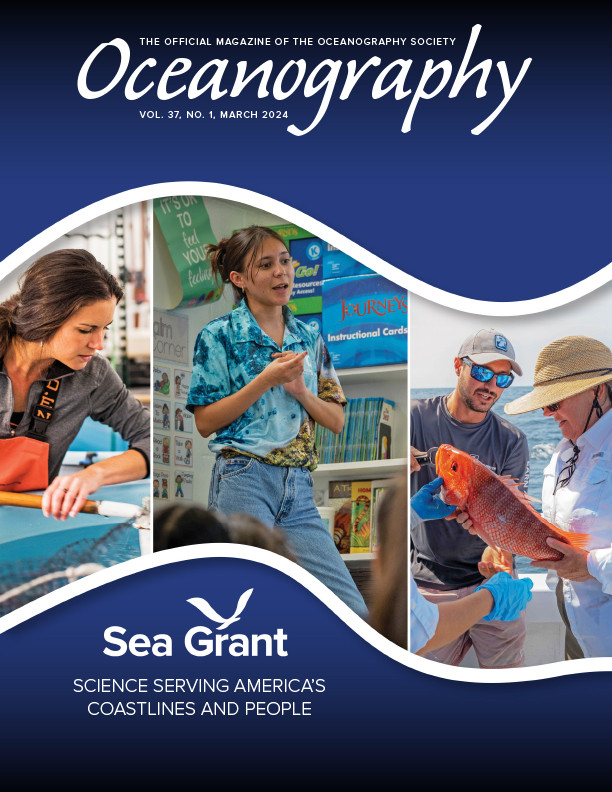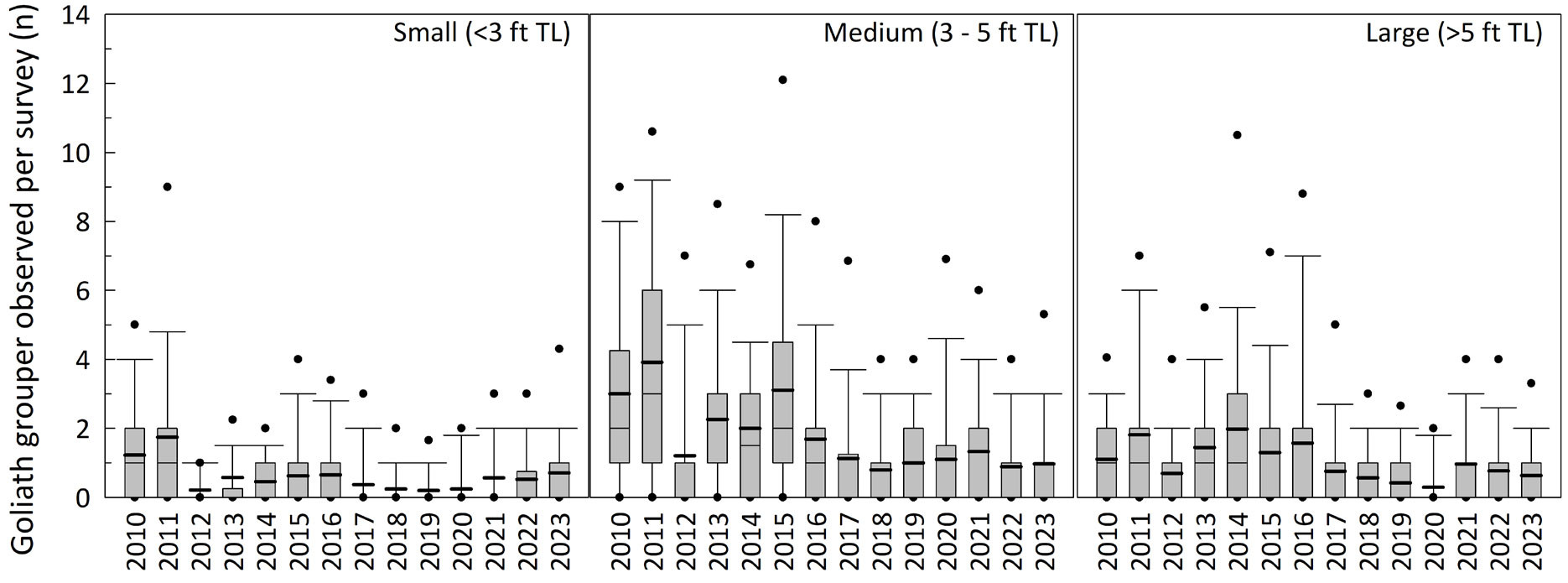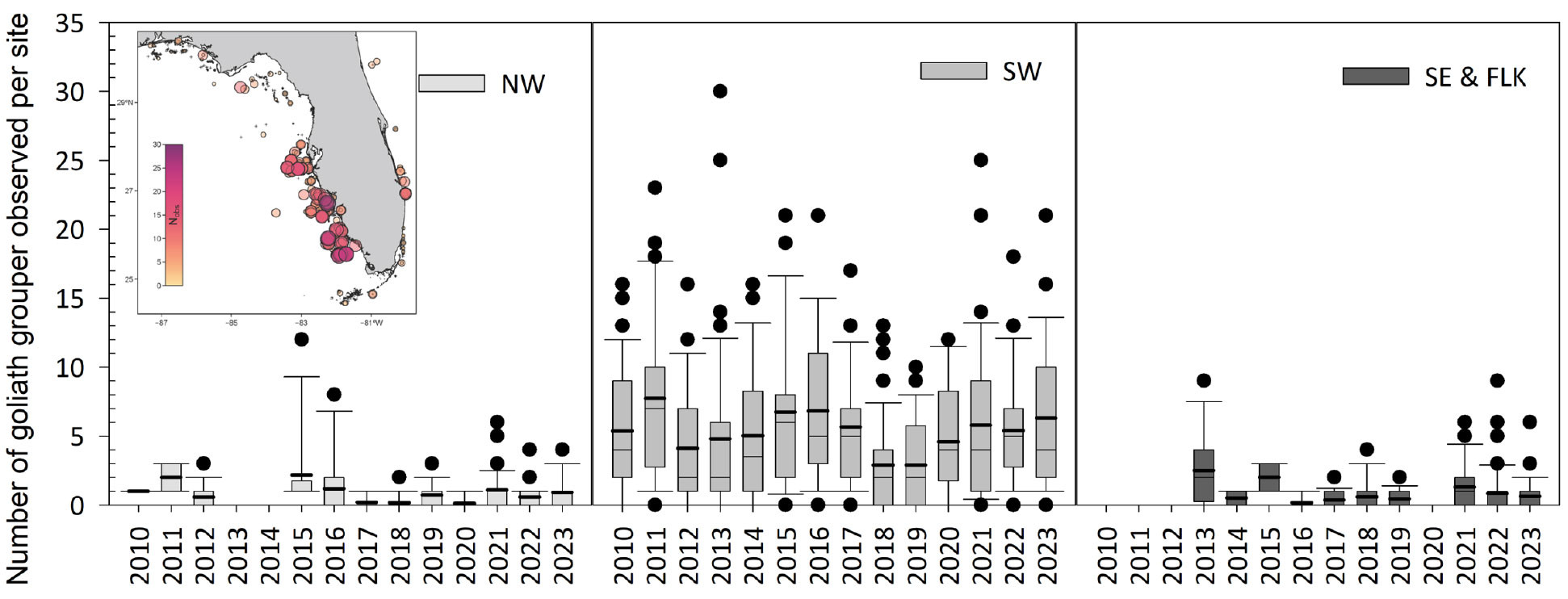Full Text
Every summer, divers across Florida don their masks and fins and embark on a mission to provide data about one of the world’s largest groupers. The Atlantic goliath grouper (Epinephelus itajara, hereafter referred to as goliath grouper) is a large, long-lived reef species that can reach lengths exceeding 2 m and ages of at least 37 years (Bullock et al., 1992). Occurring in subtropical/tropical waters of the South Atlantic and Gulf of Mexico, the species suffered significant overfishing and population declines through the 1980s. In 1990, the harvest of goliath grouper was prohibited in the United States, and the species remains protected from harvest in all federal waters of the United States at this time (although the state of Florida recently approved a limited, highly regulated harvest opportunity for goliath grouper in state waters; FWC, 2022). The state of Florida has historically been a center of abundance for this species, and although numbers have been rebuilding in some areas since the moratorium, stock assessment remains complicated and the status of the population is unclear (Koenig et al., 2011; SEDAR, 2016; Locascio et al., 2023).
Based on the lack of traditional data typically needed for stock assessments (e.g., landings, size, and age composition), fisheries managers have long noted a need for more information on the distribution, abundance, and size composition of goliath grouper (SEDAR, 2016). The Great Goliath Grouper Count (GGGC) was initiated in 2010 as a partnership between Florida Sea Grant and the Florida Fish and Wildlife Conservation Commission (FWC) to address this lack of data and incorporate stakeholders in the collection of fisheries information. Goliath grouper make excellent candidates for visual surveys—they are easily identifiable and approachable underwater, and they occur at relatively shallow (<50 m) reef habitats that are accessible to divers. Their charismatic reef presence and exceptional size make them especially interesting to underwater enthusiasts and citizen scientists, and Florida artificial reefs are an underwater destination for many divers hoping to observe them (Shideler and Pierce, 2016). Collaboration with citizen scientists allows for efficient, cost-effective data collection, and the GGGC connects fisheries scientists with data collected by divers who are already well versed and invested in the resource.
GGGC divers are organized and trained by Florida Sea Grant. They follow standardized protocols for reporting number and total length estimates of goliath grouper, as well as the location, habitat type, and depth of each survey. Surveys intentionally the target artificial reefs where goliath grouper are most likely to be encountered (Collins et al., 2015), and sites are revisited annually to identify shifts in abundance and size distribution over time. The event strategically occurs during the first two weeks of June, when water clarity is normally good and underwater temperatures are warm enough to encourage diver participation. June is also well ahead of the reproductive season (August–September), when adult fish are more apt to be moving away from resident sites as they travel to spawning aggregations (Collins, 2014; Ellis et al., 2023). GGGC divers assign observed fish to general size categories (<3 ft TL, 3–5 ft TL, and >5 ft TL) that simplify reporting while also providing data that reflect life history milestones (Bullock et al., 1992); the size data inform trends in recruitment and size/age structure of fish observed within the study area (Figure 1). Since 2010, GGGC participants have contributed 987 underwater surveys. This program has expanded through time to include the entire state of Florida, but the highest numbers of fish are observed in southwest Florida (Figure 2).
|
|
|
|
Working with stakeholders through cooperative programs such as the GGGC provides a mechanism for collecting meaningful data over a broad geographic area that would be difficult for a single state agency or university to achieve cost-effectively and in a timely manner. The most recent goliath grouper stock assessment incorporated GGGC data into the process, demonstrating the utility of this long-term data series (SEDAR, 2016) and underlining the value of stakeholder contributions to fisheries management.



